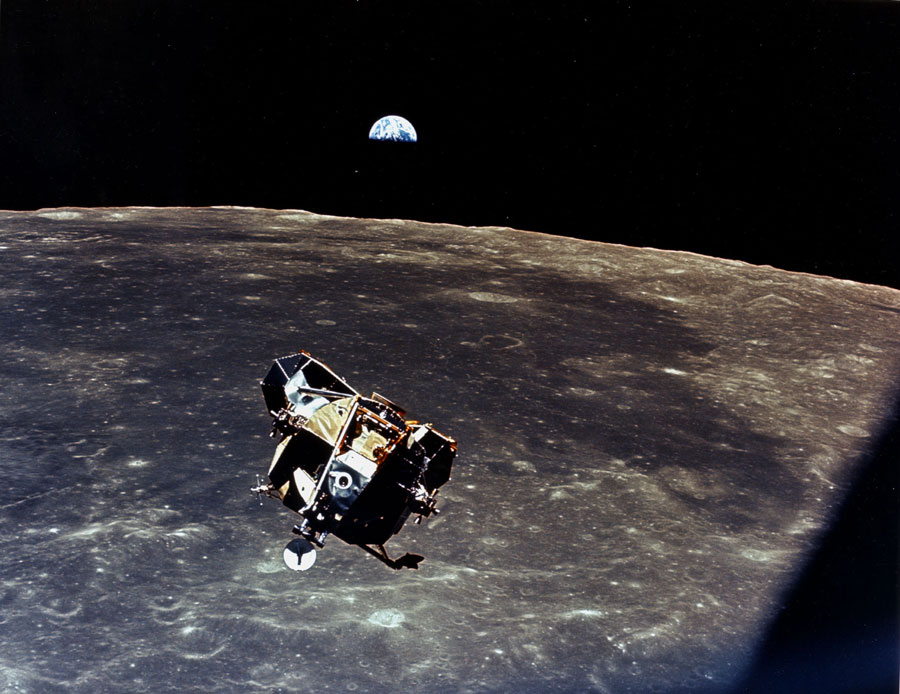It looks like you're using an Ad Blocker.
Please white-list or disable AboveTopSecret.com in your ad-blocking tool.
Thank you.
Some features of ATS will be disabled while you continue to use an ad-blocker.
share:
originally posted by: Ove38
How do you explain the small Earth in Apollo images ?
Look up how different lenses affect the relationship of distant things. Take a picture of the moon with your phone's camera, then look at it through a telescope.
It's the lens that changes the appearance of the size of the object.
Seriously, though, look at this page and pay attention to the size of the microwave in the background of the two main pictures (shown below):

Note that the above picture is taken with an 85mm lens (a slight "zoom" lens, where 50mm is the baseline for a lens that captures close to what the eye sees). The microwave is large in this image.

This is taken with a 24mm lens (wide-angle lens). The microwave is smaller in this image, even though the distance from it in the picture is the exact same from the lens of the camera.
You'll also note that the shape and look of her face is different in each image...again, that is an effect of the different size of lenses, where a zoom lens flattens things and makes them appear closer together (in relation to the lense) and a wide-angle exaggerates the distance of things in the picture.
Hope that helps. in short, the new picture of earth is taken with a larger lens than the old picture, whose lens in the camera had a wider angle.
ETA: A good comparison is how realtors will use a wide-angle lens to make small rooms appear bigger in their listings, or how a street photographer will use a zoom lens to make a NYC sidewalk appear more crowded than it really is.
edit on 21-12-2015 by SlapMonkey because: (no reason
given)
originally posted by: onebigmonkey
a reply to: ipsedixit
The UV photo was taken from the lunar surface, and I'm not sure where you are not seeing a circular shape but I certainly can.
Perhaps this might assist you in seeing that the earth in the photo is not a circle.
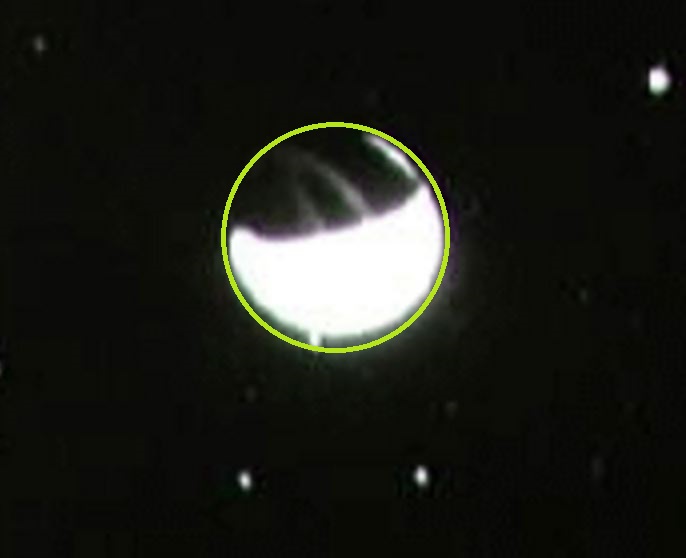
The moon also has considerable gravitational anomalies that cause problems for orbiting craft - why is it that when you look up at the moon it seems to be a sphere and not a distorted lump?
I haven't the faintest idea. A potato doesn't look like a tomato either. Here is a geoid of the Moon.
www.ggos-portal.org...
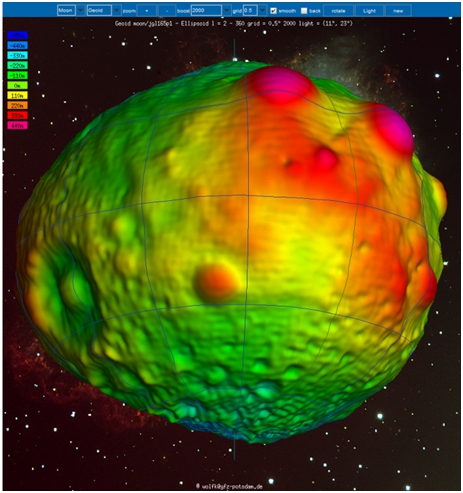
The geoid of the Moon is lumpy but not as deformed as the geoid of the Earth.
The gravitational anomalies don't appear to be as pronounced. The Moon is in a "tidal lock" orbit around the earth, which means that its heaviest side always faces us. That could be significant also in accounting for its circular appearance, viewed from earth, but on the other hand, the anomalies obvious in the geoid of the Moon might not be strong enough to overcome other factors tending to cause it to assume a more spherical shape.
For all the people crying CGI, here is something for you to look at.
This image shows the peaks on Compton crater.
Bottom left is the LRO. Right is a 1967 Lunar Orbiter image. Top left is a relatively low resolution image downloaded from the Chandrayaan website.

The full resolution image (which frankly I can't be bothered to download and process) will have almost as good a resolution as the LRO view.
This image shows the peaks on Compton crater.
Bottom left is the LRO. Right is a 1967 Lunar Orbiter image. Top left is a relatively low resolution image downloaded from the Chandrayaan website.

The full resolution image (which frankly I can't be bothered to download and process) will have almost as good a resolution as the LRO view.
originally posted by: ipsedixit
Perhaps this might assist you in seeing that the earth in the photo is not a circle.
I'm not convinced by your circle drawing skills.

Bear in mind this is a long exposure of the Earth's UV radiation emissions, not the actual physical boundaries of the sphere.
I haven't the faintest idea. A potato doesn't look like a tomato either. Here is a geoid of the Moon.
[snip for space]
The geoid of the Moon is lumpy but not as deformed as the geoid of the Earth.
The gravitational anomalies don't appear to be as pronounced. The Moon is in a "tidal lock" orbit around the earth, which means that its heaviest side always faces us.
That is not how tidal locking works.
That could be significant also in accounting for its circular appearance, viewed from earth, but on the other hand, the anomalies obvious in the geoid of the Moon might not be strong enough to overcome other factors tending to cause it to assume a more spherical shape.
The geoids you are posting are conceptual models. They are not real.
originally posted by: Disclosure Agent
another composite shot and added cgi not an actual one shot pic.....
seems Matthew Powerlands claims are becoming more and more valid.....
I've said this several times already, but I assume you aren't aware that ALL digital photographs are composite pictures? Every single one, whether it comes from NASA or your handheld camera. Aside from a handful of low resolution cameras every digital photograph is made from atleast 3 images. This is because machines are colorblind, it has to take the picture 3 times to see the red, green, and blue light.
originally posted by: onebigmonkey
I'm not convinced by your circle drawing skills.
I'm not impressed by your circle drawing skills either.
Bear in mind this is a long exposure of the Earth's UV radiation emissions, not the actual physical boundaries of the sphere.
How long an exposure was it?
So you are saying that the "circular" shape you see does not display the "actual physical boundaries" of the sphere?
That is not how tidal locking works.
How does tidal locking work?
The geoids you are posting are conceptual models. They are not real.
That's clear from my posts, I think.
a reply to: ipsedixit
Tidal locking is caused when a smaller mass body orbits a larger mass body (IE moon / Earth). The gravitational torque of the larger body with more mass affects the rotation rate of the smaller mass body.
It other words it's like a braking mechanism.
All of Jupiter's larger moons are tidally locked with it. Same with Saturn.
The moon's crust on the far side is thicker, but did not occur due to tidal locking (nor is it the cause of tidal locking).
Tidal locking is caused when a smaller mass body orbits a larger mass body (IE moon / Earth). The gravitational torque of the larger body with more mass affects the rotation rate of the smaller mass body.
It other words it's like a braking mechanism.
All of Jupiter's larger moons are tidally locked with it. Same with Saturn.
The moon's crust on the far side is thicker, but did not occur due to tidal locking (nor is it the cause of tidal locking).
a reply to: eriktheawful
Thanks for the reply. Although I appreciate the mechanism you are talking about, I don't believe that asymmetries of mass inside the orbiting body play no part in this process and I continue to believe that the more massive part of a body in a tidal locked orbit will face the body it is orbiting. If you can cite an authoritative source contradicting that last point I will of course yield the point.
Thanks for the reply. Although I appreciate the mechanism you are talking about, I don't believe that asymmetries of mass inside the orbiting body play no part in this process and I continue to believe that the more massive part of a body in a tidal locked orbit will face the body it is orbiting. If you can cite an authoritative source contradicting that last point I will of course yield the point.
originally posted by: Ove38
originally posted by: Zaphod58
a reply to: RoScoLaz4
How do you explain the small Earth in Apollo images ?
www.hq.nasa.gov...
Excellect. ...catch~ !
I stopped believing in nasa long time ago but also find the flat earth theory completely ridicolous.
Anyway here's a nice doc on the moon landing.
Anyway here's a nice doc on the moon landing.
a reply to: Jabbah
I agree with Mr. Wintzer's summation in the video. As time goes on, it will become more and more obvious, to more and more people, that the graphic renditions, in photo and film of the Apollo program are stagings and are no longer convincing to a sophisticated audience. The first Star Trek episodes were convincing to many people when they came out, but are now laughed at.
It's getting to that point with the Moon missions of NASA. They should just fess up and ask for people's understanding of what was thought necessary during the dangerous Cold War period. Many, particularly young people, will feel injured, but mature people will understand and perhaps even, as Mr. Wintzer does, applaud the Cold Warriors who did what they had to do.
I agree with Mr. Wintzer's summation in the video. As time goes on, it will become more and more obvious, to more and more people, that the graphic renditions, in photo and film of the Apollo program are stagings and are no longer convincing to a sophisticated audience. The first Star Trek episodes were convincing to many people when they came out, but are now laughed at.
It's getting to that point with the Moon missions of NASA. They should just fess up and ask for people's understanding of what was thought necessary during the dangerous Cold War period. Many, particularly young people, will feel injured, but mature people will understand and perhaps even, as Mr. Wintzer does, applaud the Cold Warriors who did what they had to do.
edit on 22-12-2015 by ipsedixit because: (no reason given)
a reply to: eNumbra
In your example, that might look like it was taken from a short distance away with a 50mm lens, but in fact it may have been taken much further away with a 500mm lens. Result is the foreground looks about the same as if you'd taken it closer with a 50mm lens, but the moon on the other hand is magnified quite a bit.
In your example, that might look like it was taken from a short distance away with a 50mm lens, but in fact it may have been taken much further away with a 500mm lens. Result is the foreground looks about the same as if you'd taken it closer with a 50mm lens, but the moon on the other hand is magnified quite a bit.
a reply to: onebigmonkey
Are you telling me that he has proclaimed himself the Messiah?
Halleluyah!!!
I've been waiting for the Messiah! Oh joy!! Praise, praise His name. Praised be the name of Wintzer!!
Imagine that, The Messiah!! doesn't think America has gone to the Moon either. Praise be to Wintzer!
I have to tell my friends. The Messiah has come! Thank you onebigmonkey. You are the John the Baptist of our era.
Halleluyah!!
Are you telling me that he has proclaimed himself the Messiah?
Halleluyah!!!
I've been waiting for the Messiah! Oh joy!! Praise, praise His name. Praised be the name of Wintzer!!
Imagine that, The Messiah!! doesn't think America has gone to the Moon either. Praise be to Wintzer!
I have to tell my friends. The Messiah has come! Thank you onebigmonkey. You are the John the Baptist of our era.
Halleluyah!!
originally posted by: eriktheawful
a reply to: ipsedixit
Tidal locking is caused when a smaller mass body orbits a larger mass body (IE moon / Earth). The gravitational torque of the larger body with more mass affects the rotation rate of the smaller mass body.
It other words it's like a braking mechanism.
All of Jupiter's larger moons are tidally locked with it. Same with Saturn.
The moon's crust on the far side is thicker, but did not occur due to tidal locking (nor is it the cause of tidal locking).
Sorry to be correcting you, but that's not how tidal locking works either. Hypothetically speaking, two bodies of equal mass can get tidally locked to each other too. In fact, the larger the moon, the easier it is for it to get locked.
Tidal locking occurs due to the fact that, at any one time, the sides of the two bodies facing each other experience greater gravitational attraction than the sides facing away. This produces a torque on the sides facing each other, slowing the rotation that tries to move that side away, until the rotation relative to the other body is stopped.
originally posted by: Komodo
originally posted by: Ove38
originally posted by: Zaphod58
a reply to: RoScoLaz4
How do you explain the small Earth in Apollo images ?
www.hq.nasa.gov...
Excellect. ...catch~ !
...Only if you don't understand how lens with different focal length work. You never tried using the zoom on your camera?
originally posted by: Komodo
Excellect. ...catch~ !
It's not really an "excellent catch" but instead a poor attempt at a "catch", because ove38 seemed to forget about the fact that different pictures can be taken with different focal lengths.

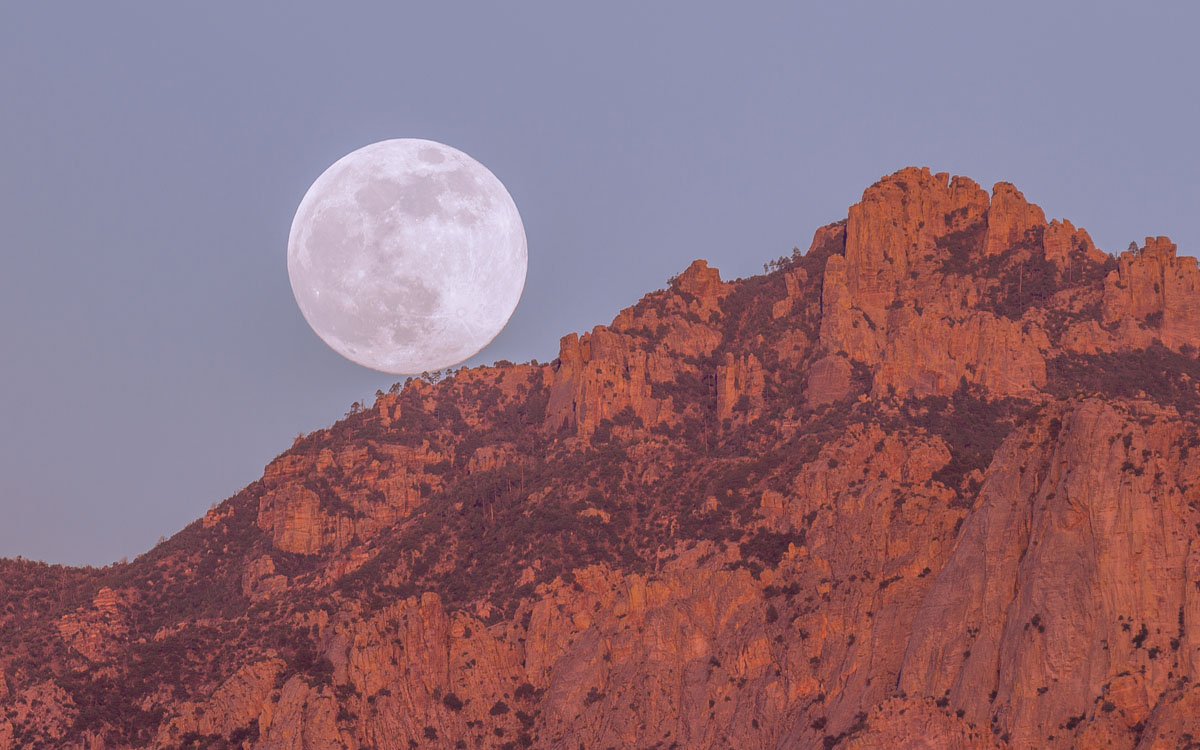
Or these Apollo 11 images . The first one is taken with a focal length of 80 mm. The second one was 250 mm. It isn't a conspiracy or a mystery; it's basic photography.
Focal Length: 80mm
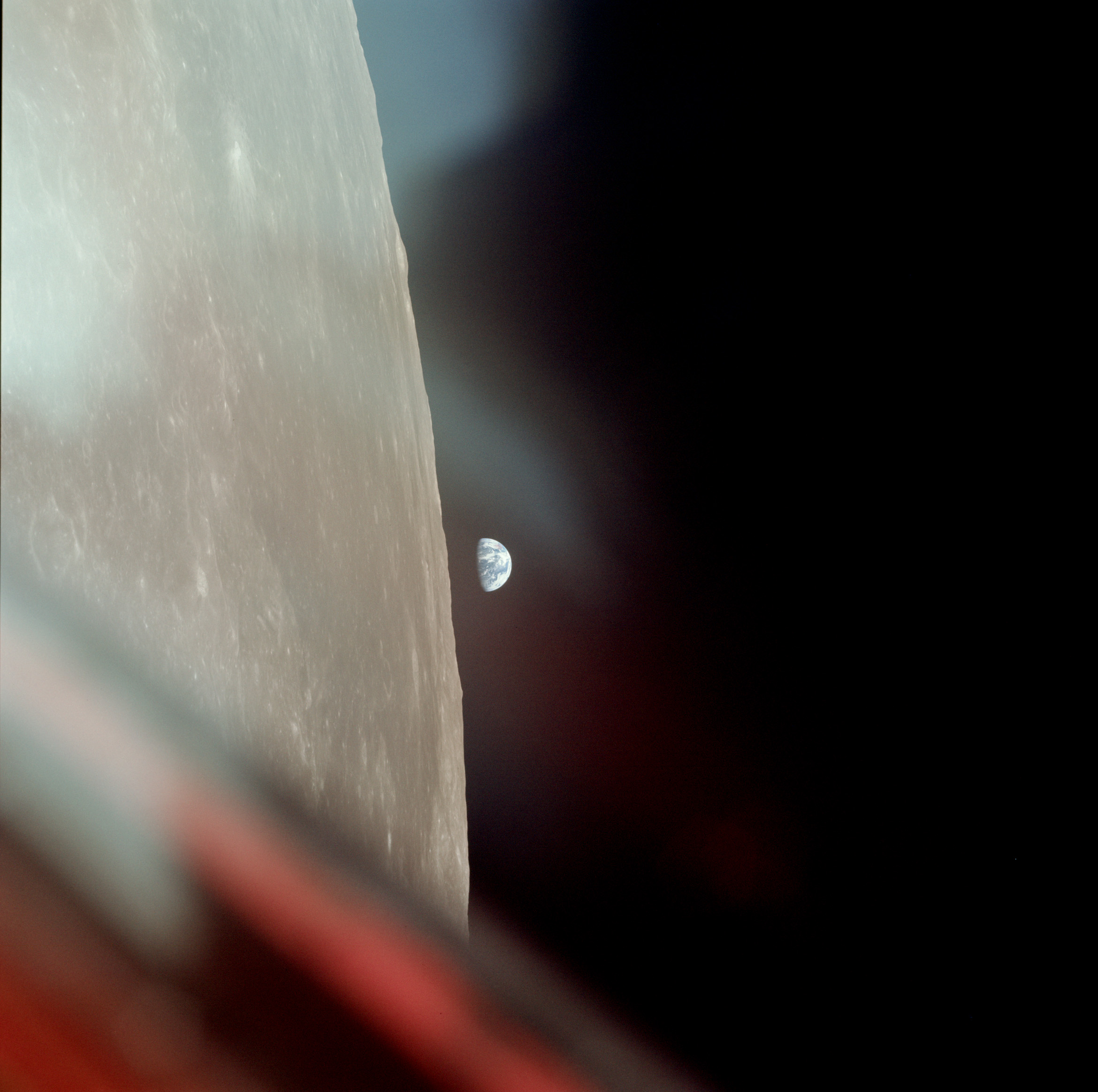
Focal Length: 250mm
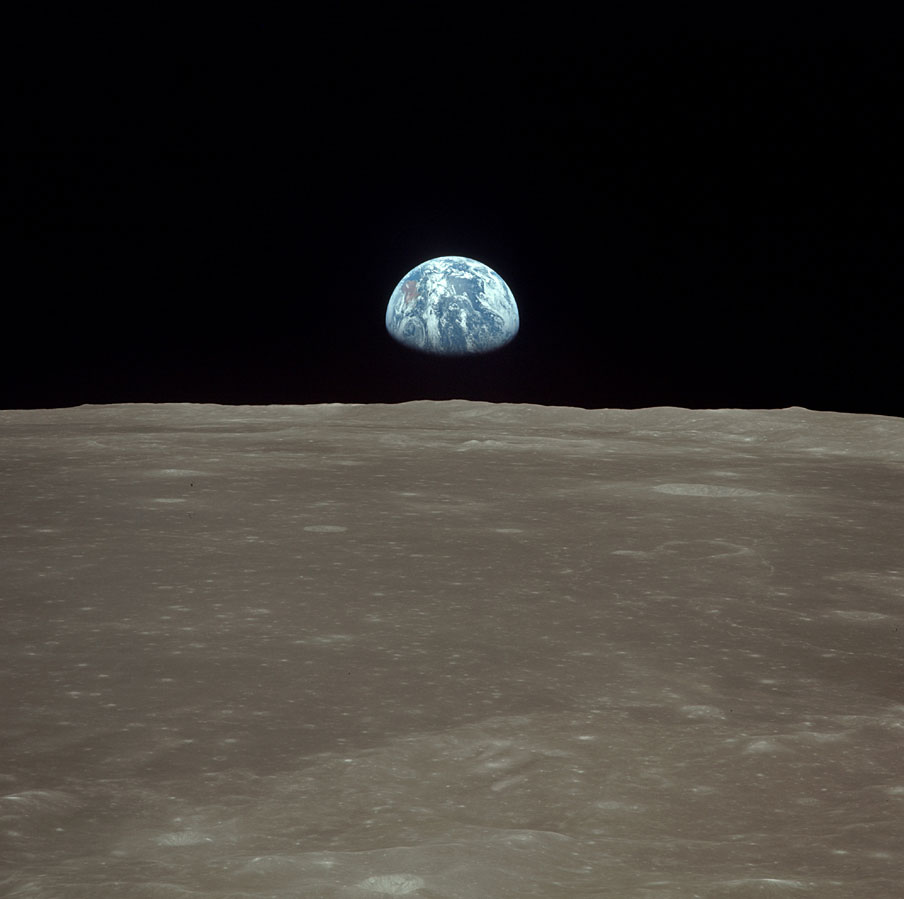
a reply to: Soylent Green Is People
Excellent demonstration, but I think that people are also missing the obvious: the picture has been cropped from a much larger one.
Excellent demonstration, but I think that people are also missing the obvious: the picture has been cropped from a much larger one.
new topics
-
Christmas Car Near Detroit…
Automotive Discussion: 43 minutes ago -
Assetto Corsa EVO - a New Chapter in Simracing starts January 16th
Video Games: 3 hours ago -
The Phenomenon documentary by James Fox
Aliens and UFOs: 6 hours ago -
New UK Petition - Close the borders! Suspend ALL immigration for 5 years!
Regional Politics: 7 hours ago -
The Looking Glass - Episode 3: The Path of Least Resistance
Short Stories: 10 hours ago
top topics
-
Treasury Secretary Janet Yellen Says The USA Will Be in Debt Default in Jan 2025 - Unless...
Mainstream News: 16 hours ago, 8 flags -
Credit card debt
Relationships: 12 hours ago, 7 flags -
The Phenomenon documentary by James Fox
Aliens and UFOs: 6 hours ago, 7 flags -
President-elect Trump asks the Supreme Court to Let Tik-Tok Continue Operating in the U.S..
Mainstream News: 12 hours ago, 6 flags -
Danish Prime Minister said to keep 3 days worth of canned goods on hand
World War Three: 17 hours ago, 5 flags -
Trash To Treasure: Dumpster Diving With Mike The Scavenger
General Chit Chat: 16 hours ago, 4 flags -
The Looking Glass - Episode 3: The Path of Least Resistance
Short Stories: 10 hours ago, 3 flags -
Christmas Car Near Detroit…
Automotive Discussion: 43 minutes ago, 3 flags -
New UK Petition - Close the borders! Suspend ALL immigration for 5 years!
Regional Politics: 7 hours ago, 2 flags -
Assetto Corsa EVO - a New Chapter in Simracing starts January 16th
Video Games: 3 hours ago, 1 flags
active topics
-
Trump's idea to make Canada the 51st US state: 'Potential is massive'
Mainstream News • 101 • : andy06shake -
-@TH3WH17ERABB17- -Q- ---TIME TO SHOW THE WORLD--- -Part- --44--
Dissecting Disinformation • 3831 • : Thoughtful3 -
Russia Ukraine Update Thread - part 3
World War Three • 6899 • : gortex -
Treasury Secretary Janet Yellen Says The USA Will Be in Debt Default in Jan 2025 - Unless...
Mainstream News • 28 • : Coelacanth55 -
Plane Crash Today --Azerbaijanian E190 passenger jet
Mainstream News • 60 • : Oldcarpy2 -
The Looking Glass - Episode 3: The Path of Least Resistance
Short Stories • 4 • : BingoMcGoof -
President-elect Trump asks the Supreme Court to Let Tik-Tok Continue Operating in the U.S..
Mainstream News • 20 • : AgarthaSeed -
Elon Musk futurist?
Dreams & Predictions • 22 • : cherokeetroy -
Christmas Car Near Detroit…
Automotive Discussion • 0 • : JJproductions -
New UK Petition - Close the borders! Suspend ALL immigration for 5 years!
Regional Politics • 7 • : angelchemuel


